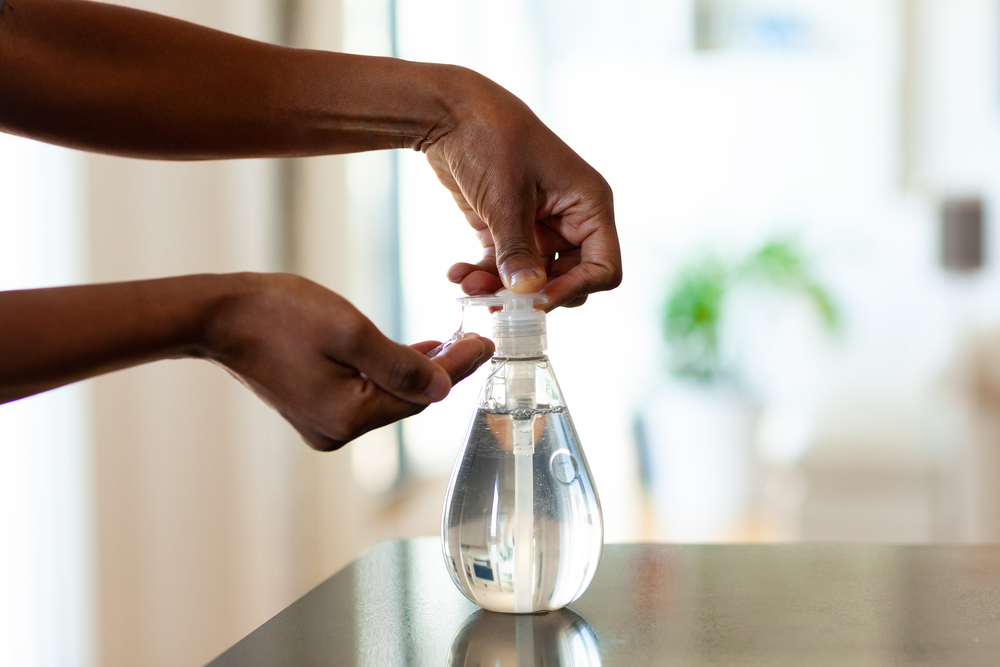That bottle of hand sanitizer you’ve been religiously applying might be doing more harm than good. While the pandemic certainly taught us all about the importance of hand hygiene, the pendulum may have swung too far. Your immune system thrives on certain microbial exposures, and the quest for perpetually sterile hands might be undermining your body’s natural defense mechanisms in ways you never expected.
When your immune system gets too little practice
Your immune system works like a highly sophisticated security system that needs regular training to function optimally. Each encounter with various microbes helps it learn, adapt, and build a comprehensive defense library. When you constantly sanitize your hands, you dramatically reduce these valuable training opportunities.
This training deficit particularly affects your innate immune system, the frontline defense that responds immediately to invaders. Without regular exposure to a diverse range of microbes, these responses can become less efficient or inappropriately calibrated. Your immune cells need these everyday exposures to maintain their proper function, similar to how muscles need regular use to maintain strength.
Evidence suggests that people living in overly sanitized environments tend to have immune systems that overreact to harmless substances while potentially underresponding to genuine threats. This imbalance may contribute to the rising rates of allergies, asthma, and certain autoimmune conditions seen in highly developed countries with stringent hygiene practices.
The microbiome mystery on your skin
Most conversations about microbiomes focus on gut bacteria, but your skin hosts its own diverse microbial ecosystem that plays crucial roles in your health. These resident microbes occupy space that might otherwise be colonized by harmful organisms and actually produce antimicrobial compounds that help fight dangerous pathogens.
Frequent use of alcohol-based sanitizers and antimicrobial soaps disrupts this delicate balance. While killing harmful germs, these products also eliminate beneficial bacteria that help maintain your skin’s protective barrier. This disruption can create openings for opportunistic pathogens or problematic yeasts that would normally be kept in check by your skin’s healthy bacterial community.
Research increasingly shows that a diverse skin microbiome contributes to proper immune function both locally and systemically. The microbes living on your hands communicate with your immune cells, helping to regulate inflammatory responses and contributing to your body’s ability to distinguish between harmless and dangerous exposures.
The resistance risk nobody talks about
While antibiotic resistance receives much attention, fewer people recognize that overuse of certain sanitizers may contribute to adaptive changes in some pathogens. Bacteria and other microbes evolve remarkably quickly, and constant exposure to the same sanitizing agents can potentially select for variants with greater tolerance to these compounds.
This concern particularly applies to sanitizers containing antimicrobial ingredients like triclosan or benzalkonium chloride rather than alcohol-based products. Laboratory studies have shown that repeated exposure to these compounds can lead to reduced susceptibility in certain bacterial strains, potentially creating more resilient pathogens.
The more worrying possibility involves cross-resistance, where adaptation to sanitizing compounds might coincidentally confer resistance to antibiotics through shared mechanisms. While the evidence remains preliminary, this potential link between excessive sanitizer use and antibiotic resistance adds another dimension to concerns about over-sanitizing.
The surprising allergy connection
The dramatic rise in allergic conditions over recent decades has puzzled medical researchers, leading to the development of the hygiene hypothesis, which has evolved into more refined theories about immune dysregulation. These frameworks suggest that reduced exposure to diverse microbes during critical developmental windows may contribute to inappropriate immune responses to harmless substances.
While much of this research focuses on early childhood exposures, emerging evidence indicates that ongoing microbial contact throughout life helps maintain proper immune tolerance. Your hands represent a major interface for this microbial interaction, bringing environmental microbes into contact with your immune system regularly.
Excessive hand sanitizing limits this important exposure variety, potentially contributing to immune systems that react inappropriately to pollen, food proteins, or other non-threatening substances. The relationship appears dose-dependent, meaning that more extreme sanitizing habits potentially create greater risk for developing or worsening allergic tendencies.
The chemical burden on your skin barrier
Beyond disrupting microbial communities, frequent sanitizer use can damage your skin’s physical barrier through dehydration and irritation. Alcohol-based products strip away natural oils, while many sanitizing products contain additional ingredients like fragrance and preservatives that can trigger irritant or allergic reactions with repeated exposure.
When your skin barrier becomes compromised, its ability to prevent penetration of allergens, irritants, and pathogens diminishes significantly. This damage creates a paradoxical situation where efforts to reduce infection risk through sanitizing might actually increase vulnerability to various skin problems and potentially even certain infections that exploit barrier weaknesses.
The impact extends beyond mere dryness. Chronically irritated skin attracts inflammatory immune cells, creating low-level inflammation that can alter local immune function and potentially even influence systemic immune responses. This inflammation-barrier damage cycle can become self-perpetuating, continuing even after reducing sanitizer use.
Finding the hygiene sweet spot
Despite these concerns, appropriate hand hygiene remains critically important in many contexts. The key lies in finding the balance between necessary cleanliness and excessive sanitization that undermines immune function and skin health.
Regular handwashing with plain soap and water removes most harmful pathogens while being gentler on your skin microbiome than antimicrobial products. Plain soap works primarily by physical removal rather than killing, helping dislodge unwanted microbes while having less impact on your resident beneficial bacteria.
Reserving sanitizer use for situations where soap and water aren’t available or when truly necessary, such as before visiting vulnerable individuals or after exposure to high-risk environments, provides protection when needed without the downsides of constant use. This targeted approach maintains immune-supporting microbial diversity during everyday activities while still reducing disease transmission risk.
Context matters tremendously in hygiene decisions. Hospital settings, care of immunocompromised individuals, and food preparation areas legitimately require stringent hygiene practices. However, the same level of sanitization proves unnecessary and potentially counterproductive during routine daily activities where exposure to diverse environmental microbes benefits immune development and regulation.
Rebuilding your hand microbiome
If you’ve been over-sanitizing, the good news is that your hand microbiome can recover with modified habits. The microbial communities on skin renew surprisingly quickly when given the opportunity, often showing measurable improvements within days of reducing harsh hygiene practices.
Spending time in natural environments significantly accelerates this recovery. Gardening without gloves, for instance, exposes your hands to the rich microbial diversity in soil, which contains numerous species that support healthy immune function. Similarly, petting animals, particularly those with outdoor exposure, helps reintroduce beneficial microbes to your skin.
Moisturizing with products that support barrier repair helps create hospitable conditions for beneficial microbes to recolonize. Ingredients like ceramides, hyaluronic acid, and glycerin help restore skin barrier function without antimicrobial properties that might impede microbial recovery.
Some early research even suggests potential benefits from probiotic skin applications, though this field remains in its infancy. Future approaches might include targeted microbial treatments to restore diversity after necessary sanitizing episodes, similar to how probiotic supplements help rebuild gut microbiomes after antibiotic use.
As with many aspects of health, moderation and context-appropriate choices matter most when considering hand hygiene. Your immune system and skin microbiome benefit from finding the middle path between neglecting hygiene and over-sanitizing. By understanding when sanitizing truly helps and when it potentially harms, you can make choices that protect against immediate infection risks while supporting your body’s remarkable natural defense systems for long-term health.
















